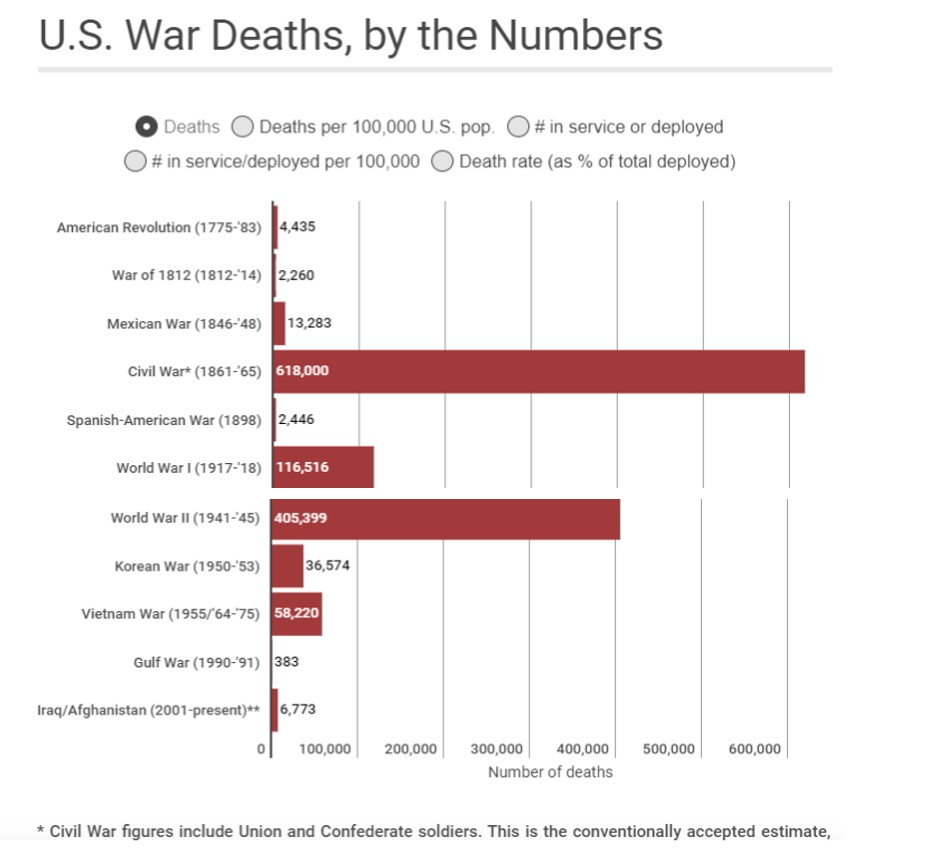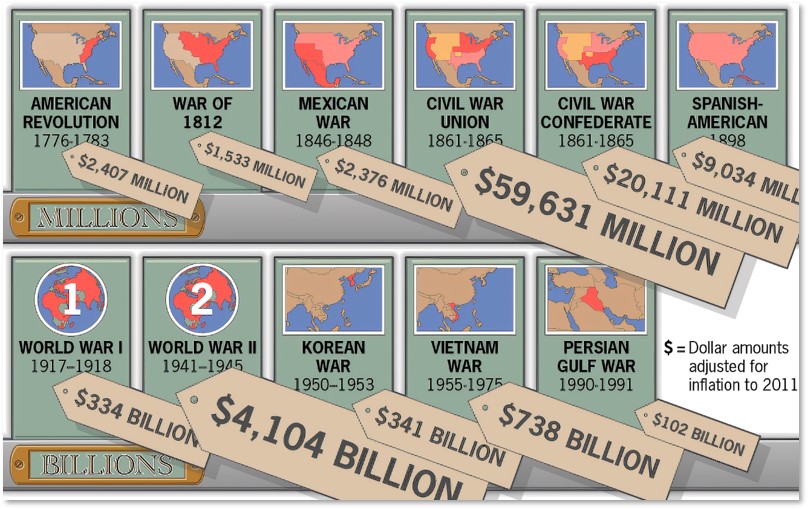I have been thinking about war a lot lately. Well, who hasn’t? As a country we have swung between the relief of getting out of Afghanistan after 20 years and the sorrow of losing 13 more men and women. While glad to be out from under this incredible cost to the nation, we yet feel the outrage of our hasty and ill-planned withdrawal.
The hearings have begun, asking the question of why we were there for so long. The larger question, of course, remains unaddressed: why we fight wars to begin with.
The Ubiquitous War Memorials
Think about the town you grew up in or the city where you live. In virtually all cases, you can think of a war memorial somewhere. There might be a stone, a bronze plaque, a garden, and a flag. Sometimes we erect big memorials glorifying war and the people who fought it. Other times we settle for modest lists that name the dead. These memorials remind us of the men and women who fought our wars but didn’t come home again.
So many memorials, so many names, so many wasted lives. Some wars needed to be fought: the American Revolution and World War II come immediately to mind. We call these the “good” wars because they had no ambiguity.
Yet any other conflicts could not boast similar motivations. Over the course of history, men have fought wars for power, glory, wealth, the expansion of empires, revenge, status, to become tyrants, to overthrow tyrants, spreading religion, changing religion, and on and on. Some wars—too many—were fought simply to enrich the financiers and manufacturers of weapons systems but disguised by appeals to patriotism.
The War to End All Wars
Think of World War I – military and civilian deaths totaled 40,000,000. Bombs, mines, and deadly gas devastated countries. WWI destroyed buildings, ruined farmland, left governments in tatters, uprooted or wiped out families. Women were raped, men crippled, environments devastated, and more. Why? Because the assassination of an Austrian archduke pulled interlocking alliances into play.
America had nothing to do with any of this but we were called to fight and we finally put an end to what became known as The War to End All Wars. If only.
NOTE: An area of northern France, called le Zone Rouge, remains strictly off limits. France allows no public entry or agricultural use in the zone because of the impossible amount of human remains, explosive and chemical munitions, shell holes and trenches from both world wars that have yet to be recovered or removed. Le Zone Rouge (the Red Zone) around Verdun occupies 460 square miles, about the size of Paris.
Yet America alone has fought five wars since then, including our “police action” in Korea. The following chart from KQED shows the number of American deaths in all our wars since the American Revolution.
Remember, you’re looking at American deaths only. To put our losses in perspective, this chart compares deaths by country in World War II as a percentage of each country’s population in 1939 when the war began. Notice that the United States appears at the bottom. We entered the war late, after other countries had been fighting for years.
WWII was a “good” war, yet the waste appalls us.
The Opportunity Cost of War
The above charts report human lives lost—the men and women whose names are cast, engraved, carved, and printed on war memorials all over the country. In addition, though, you have to get a sense of how much money wars have costs us over time.
This infographic was completed in 2011 — 10 years ago. Thus, it doesn’t include Afghanistan. Current estimates put that amount at a range between $8 trillion and $14 trillion dollars. Casualties total 900,000 deaths
 We also have to confront another cost of war: the opportunity cost. This measures what we might have done with taxpayer money to serve the American people’s best interests instead of funding a war. It also accounts for the cost of borrowing money and the ballooning interest that hits the U.S. budget.
We also have to confront another cost of war: the opportunity cost. This measures what we might have done with taxpayer money to serve the American people’s best interests instead of funding a war. It also accounts for the cost of borrowing money and the ballooning interest that hits the U.S. budget.
I found those numbers harder to come by. How do you measure the impact of money that could have been spent on education, health care, medical research, technical innovation, environmental programs, national parks, climate change, physical infrastructure, and social support — but wasn’t? What advances could have been made? How much healthier could our society be? What marvelous infrastructure might now exist? We will never know.
Opportunity Cost and the National Debt
The numbers are clearer when it comes to national debt. Debt.org tells us:
“Many experts estimate that since 2001, the United States has spent as much as $5.1 trillion on war and war-related costs such as veteran care, ally assistance and stronger homeland security. By this figure, the war is responsible for nearly a third of the total national debt.”
 The next time you hear Republicans scream about the national debt and balancing the budget, remember that number. Because all of the wars fought by the United States since 2001 were initiated by Republicans. Not only that, they put those wars on credit cards, starting with George W. Bush. Unlike previous presidents, who raised top taxes to pay for a war, the Republicans cut top taxes and borrowed the money. Their borrow-and-spend approach explains why they are directly responsible for so much of the national debt they decry.
The next time you hear Republicans scream about the national debt and balancing the budget, remember that number. Because all of the wars fought by the United States since 2001 were initiated by Republicans. Not only that, they put those wars on credit cards, starting with George W. Bush. Unlike previous presidents, who raised top taxes to pay for a war, the Republicans cut top taxes and borrowed the money. Their borrow-and-spend approach explains why they are directly responsible for so much of the national debt they decry.
No Reporting Required
It occurred to me while writing this post that at no point in a war does anyone have to report on its cost to the American people. Never does an administration official or a senior Pentagon officer have to stand in front of the microphones and deliver the statistics: Cost in money, number of casualties, cost of care for veterans, opportunity cost to the country.
Neither does anyone in the print or broadcast media report on the cost of war.
Any time the country enters into a war, a mandate to do this should go into effect. Like the State of Union address, it would become a State of the War address. This report would force everyone, from the President on down, to confront the costs instead of brushing them into the background.
Why Start Wars?
So, why do we fight “bad” wars—the ones that didn’t need to start in the first place? There are a lot of reasons. I listed many of them above. Beyond that, however, there is one overriding similarity among the people who start wars, fight wars, and glorify wars. But it’s not the one you think.
More on that next week.




